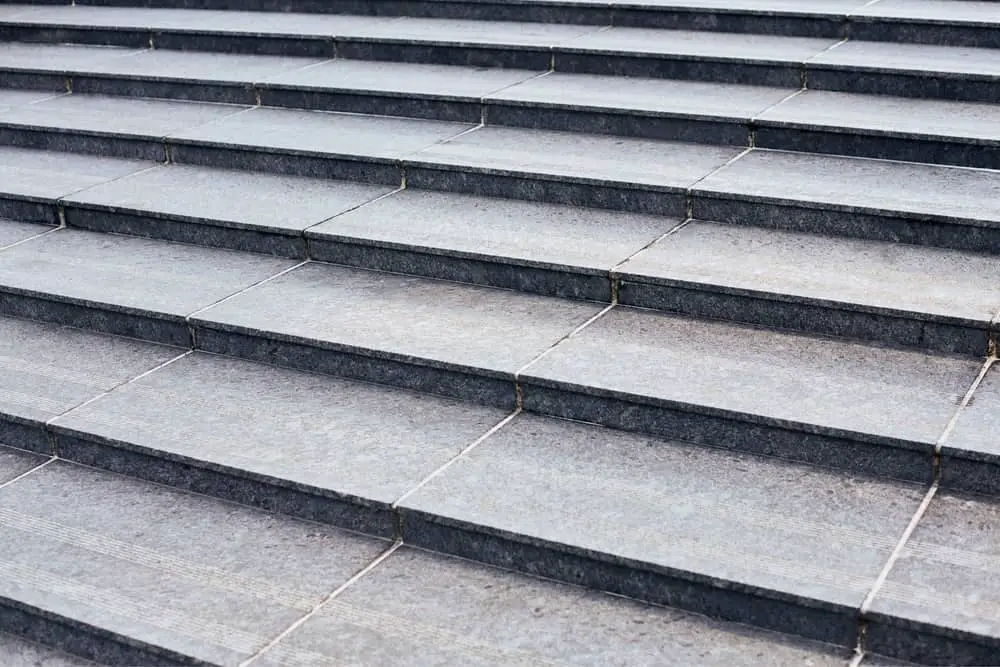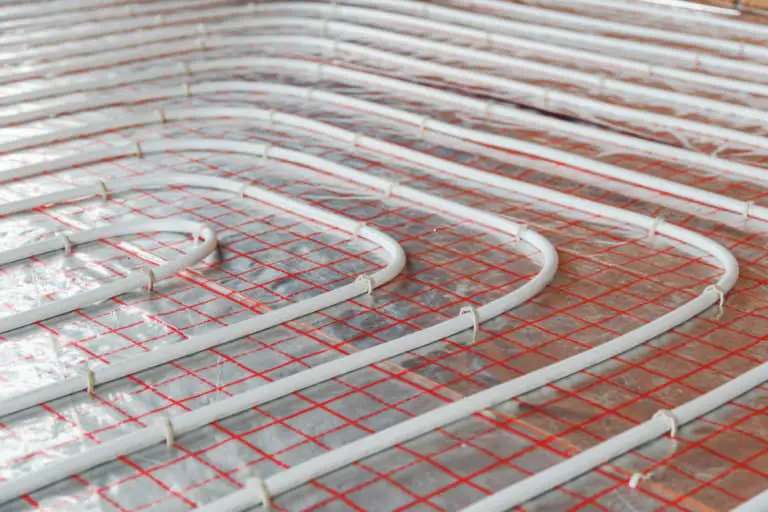Can Tiles Be Used On Stairs?
A staircase is an essential component of many buildings and homes but is often neglected in design and safety. Standard materials and procedures are often used to make stairs, but with creativity, stairs can be colorful, aesthetically appealing, functional, and safe. You can build your stairs with various materials, and there are numerous methods available for styling, but are tiles a good option for stairs?
Tiles can be used on stairs, but it is best to use ceramic or porcelain tiles as these are considered the safest and most durable options. Even though the aesthetics of a stairway are important, one needs to make sure that the stairway is safe to use when building with tiles.
When considering which type of tile to use for your stairs, thought ought to be given to the general style. However, safety is, without uncertainty, the most vital thought. Fortunately, you won’t have to pick one over the other with the correct direction and planning. You can have stunning, durable stairs that match your plan vision, are not difficult to maintain, and are safe.
Are Tiles A Good Choice For Staircases?
Instead of lifts in public spaces, workplaces, commercial buildings, shopping centers, and houses, staircases are widely utilized. As per safety norms, they also play a vital role as emergency exits in buildings and commercial spaces.
Assembling stairs using marbles or granite can be costly and bring about a great deal of wastage of material, time, and work costs. Utilizing tiles on stairs is an efficient, affordable, and attractive surface choice. With numerous types of designs, patterns, and color choices accessible, you will find stair tiles that will mix well with the general theme of any space.
You can experiment with tiles and create a splendid look by combining different colors, laying them down in various patterns, or as borders to decorate each staircase step. Let your imagination reign to highlight your staircase and give it a unique flair.
Best Tiles For Stairs: Durability And Safety
Stairs generally have a lot of traffic; therefore, it is imperative to cover the stairs tread (the horizontal flat surface on which you stand) with durable, robust, and abrasion-resistant tiles. If you use tiles that do not have the load-bearing capacity needed, they may soon start showing signs of wear and tear; you will notice chipping and cracking.
Wear and tear will result in a staircase with a poor appearance which will adversely affect the look of the whole space. A damaged staircase can also result in injuries due to the increased likelihood of slipping. Stair tiles should be non-slip, water and frost-resistant, and easy to maintain.
Because stairs are a high-traffic area, they should be sparkling clean and dry. Ceramic and porcelain tiles will save you time and effort and keep stairs looking appealing. You can find ceramic and porcelain tiles in distinctive designs and color options that light up any area in which they are used.
Sharp Edges And Bullnosing Tiles
Whatever material you use to build stairs – there shouldn’t be any sharp edges. Ensuring that all stair edges are rounded will dramatically reduce any potential injuries. The industry jargon for rounding stair edges is referred to as bullnosing.
Contractors use this bullnosing technique to round off and profile edges using special blades. Natural stones work best for this technique since the stone’s beauty entirely runs through the tile. Porcelain is also a good choice when using this technique; make sure you use full-body porcelain tiles where the color is dyed into the entire tile (not just painted/glazed on the top), making them more durable.
If you want to use tiles that aren’t full-bodied, you could buy tiles with pre-bullnose trim pieces as part of the identical coloration and series. Although these pre-bullnose trim pieces are getting more challenging to locate and frequently don’t match the coloration and sizing, that is the ideal solution.
Another option is to get your tile contractor to bullnose the edges of the tiles for you. Not all tile contractors will be willing or able to do this, so ask before purchasing. Alternatively, you could send your tiles to a fabricator to have the edges professionally rounded. Remember that only natural stone and full-body tile can withstand bullnosing.
Stair Dimensions And Grout Lines
When deciding what tile to use on your staircase, it is essential to consider grout lines and shade variations within the tiles. For your stairs to be safe, they should also be built with the appropriate dimensions.
When coming down a staircase, it is essential to see each step, but the direction of the grout lines can match. However, when looking at the stairs from the lower level, the stair riser grout lines should differ from the tile’s grout lines on the stairs. This is because your subconscious can be tricked, and you may mistake where one step ends, and the next begins.
Falling down a staircase can be detrimental; therefore, they need to be built properly with the correct dimensions. The standard measurements are usually 10 inches minimum for the treads, a maximum of 7 inches for the risers, and tread noses between ¼ – ¾ inches in length. Still, it is best to find out the exact measurements from your local building authority.
Slip Resistance
Whatever material you choose to use, your stairs need to be slip-resistant; this is the most critical aspect of your staircase. Stairs should always be kept dry, and choosing tiles with a high Co-Efficient of Friction (COF) rating is essential.
Precautions should be taken to make a staircase less slippery. Special grit tape (colored or clear) or specially treaded tiles can be used. Additionally, other materials, such as wood, carpet, and rubber, can be used on tile stairways to add unique design touches and improve safety.

We have other information on the links below about deck stairs and materials to help you make your choice.
- How many deck stairs do I need
- Do I need stairs on my deck
- Why I need stairs on a deck
- Can tiles be used on stairs
- Are wooden stairs slippery.
Conclusion
Using tiles on stairs is easy on the wallet and offers many possibilities for design. However, not all tiles can be used; they must be durable and safe.
It is essential to know what you are doing when building stairs. There should be no sharp edges, and precautions should be taken to ensure the tiles are not slippery. Other aspects need to be considered, such as stair dimensions, grout lines, and knowing which tiles are best to use.
References
- https://www.quora.com/Why-would-you-put-tile-on-stairs
- https://www.pinterest.com/pin/140456082098762588/
- https://www.housebeautiful.com/design-inspiration/home-makeovers/a37246288/yes-you-can-tile-your-stair-risersand-heres-why-youll-want-to-plus-6-other-ways-to-use-tile-in-your-home/
- https://www.doityourself.com/stry/laying-ceramic-tile-stairs–what-you-should-know







